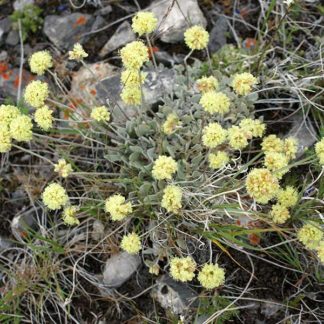with sagebrush
Showing 13–24 of 51 results
-
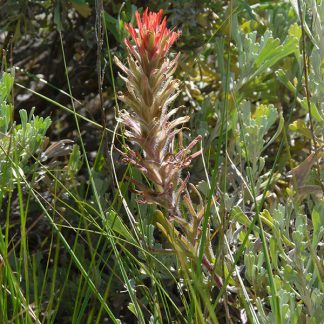
Castilleja covilleana / Rocky Mountain paintbrush
- clearly, one of the "Indian paintbrushes"
- early bloomer in the spring, even when quite short
- bright red, orange (sometimes yellow) bracts
- bracts and leaves have 3-7 deep lobes with long, soft hairs
- often grows in clusters
-
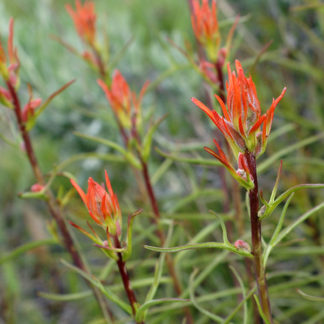
Castilleja linariifolia / Wyoming Indian paintbrush
- generally taller than most paintbrushes (up to 3 feet)
- very thin leaves, seldom lobed, seldom hairy
- red inflorescence bracts, may be lobed
- flowers extend well beyond bracts
- calyx is red and shorter than the corolla which is greenish yellow
- rocky areas with sagebrush and conifer forests
-

Collinsia parviflora / maiden blue-eyed Mary
- inconspicuous
- teeny blue and white flowers, singly or in small clusters
- reddish stems and buds more visible than the flowers
- wide variety of habitats, bare rocks to marshy fens
-

Crepis acuminata / tapertip hawksbeard
- leaves (diagnostic) - long; many deep triangular, pointed lobes; upright, grey-green; milky sap
- flowers - 5-10 rays, no disc florets; yellow; up to 70 per plant
- dry, open places in foothills; commonly with sagebrush
-
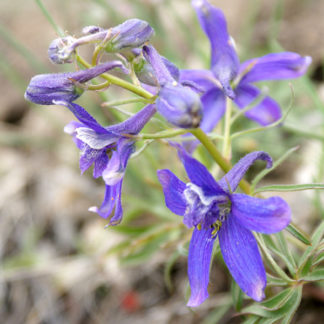
Delphinium bicolor / low larkspur
- short plant with a spike of purple flowers
- individual flowers have a pronounced spur out the back
- leaves are few, round, deeply lobed, about the size of a quarter
- widespread throughout the valley and on the hills
- appears and blooms soon after snowmelt
-
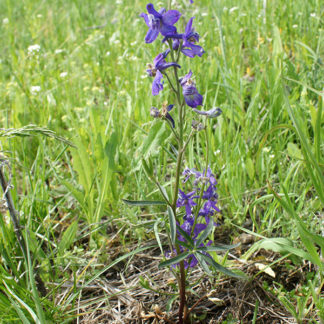
Delphinium nuttallianum / upland larkspur
- Bright blue flowers, sometimes whitish or other color petals in center
- One or several flowers per stalk
- Long spur "behind" the flower
- Leaves mostly low on the stem - divided into several or many lobes
- Open meadows, near streams, with sagebrush, any elevation
- Beginning soon after snowmelt and sometime persisting into September
-
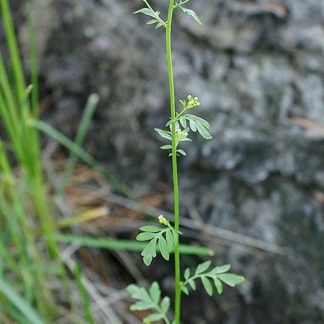
Descurainia pinnata / western tansy mustard
- another stupid yellow crucifer
- erect stem, up to 30 inches
- deeply lobed leaves, without petioles up-stem
- often near or under sagebrush, otherwise dry, disturbed and crappy soils
-

Dodecatheon pulchellum / shooting star
- five pink to lavender lobes projecting backwards
- white or yellow petal bases above a squiggly purple ring
- anthers joined into a projecting point; stigma projecting past the point
- snowmelt to early spring
- wet meadows to sagebrush communities
-
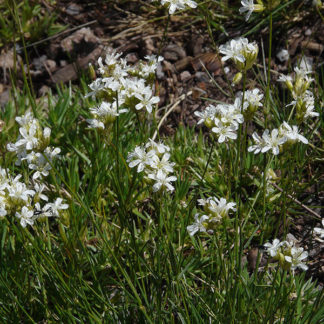
Eremogene kingii / King’s sandwort
- low-growing herb with long, thin basal leaf clusters
- white, 5-petaled flowers, ca. 1/2 in across, in terminal clusters
- 10 stamens, sometimes dark, sometimes white
- at higher elevations on shallow soil
-

Eremogone congesta / sandwort
- very small (teeny) white flowers in a ball-like arrangement
- tufts of pointy-tipped needle-like leaves 3" or less long
- cushion plant
- dry, rocky or sandy soils, rock crevices
-
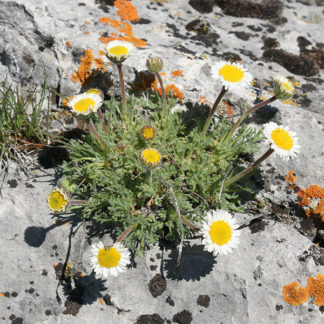
Erigeron compositus / cutleaf fleabane
- "obviously" a daisy - white "petals" (ray florets), yellow center (disk florets)
- flowers ca. 1" diameter
- flowers grow above hairy leaf mat
- early spring - soon after snowmelt
- rocky areas amongst sagebrush
Showing 13–24 of 51 results
